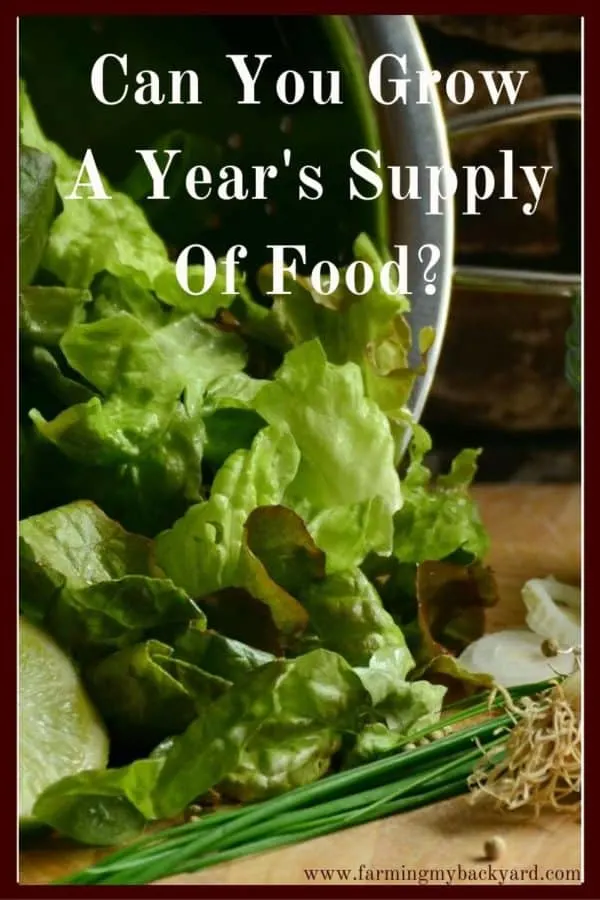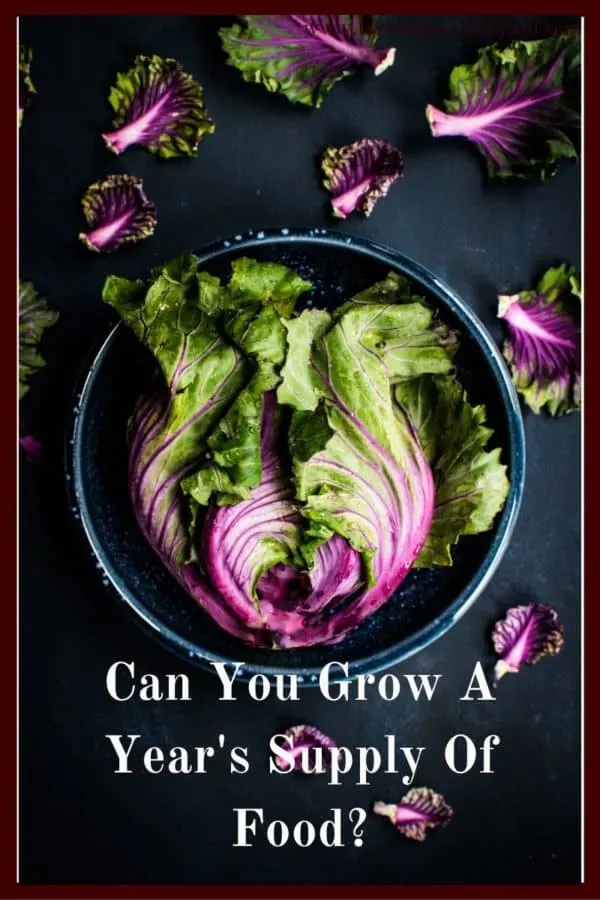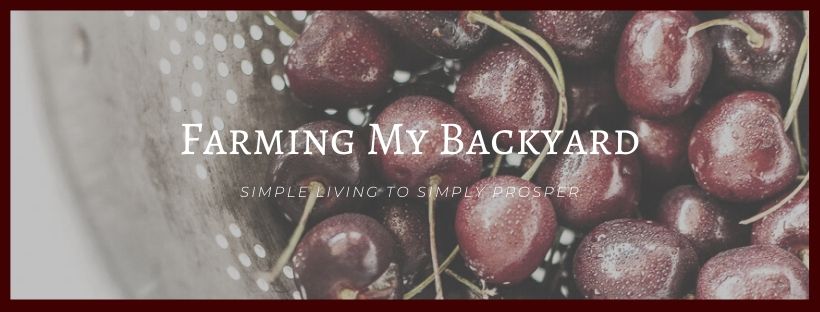Most of us who love a self-sufficiency lifestyle would love to be able to grow all our own food ourselves. Just what does it take to grow a year’s supply of food? Here’s how you can figure out what’s possible in the space you have and get started!
Figure How Much You Eat Per Year

The first step is to figure out how much food you actually need per year. There are plenty of online calculators that are geared towards planning emergency food storage. Those can be good places to start, but I like to look at what my family actually uses.
For example, my family likes to have about one jar of applesauce per week. We also eat maybe four jars of canned peaches. If I wanted to grow those myself I would need to figure out how many pounds of peaches and apples go into each jar and multiply that by 52.
It is possible to calculate that all out with information found in the internet, but I recommend purchasing some fruit in bulk, and recording how much you start with and how much you end up with. First off, it’s a great visual of just how much a pound of a particular amount of produce is. Second, you get to practice preserving that food.
Some people highly enjoy canning their own food, but I’ve made my own applesauce enough times to know that I actually prefer to purchase the majority of our household supply from the store. With a family of 8 people, that’s just a LOT of food.
How Much Space You Do Need To Grow A Year’s Supply of Food?
This works out, I guess, because our property is not actually large enough to grow a year’s worth of peaches or apples. Don’t get me wrong, I love our peach tree, and I fully intend on adding some espaliered apples down the road. It’s just not possible for me to fit a year’s worth in.
Once you know how much you actually eat per year, then you can take those numbers and figure out how much space you need to grow that amount. Let’s say you’d like to grow a year’s supply of lettuce, and your family eats one head of lettuce per week.
Head lettuce takes about 70 days to mature and requires about one foot of space per head. You would need about 10 square feet of garden space at a time, which is very doable. The biggest trick with lettuce would be using succession planting. You would also need some kind of cold weather protection so that you continually had fresh lettuce.
Garlic is another great plant to grow a year’s supply of because you can plant and harvest it all at once, and it does not take up too much space. Click here to read more about growing a year’s supply of garlic.
Other good candidates for growing a year’s supply of food are squashes, green beans, peas, carrots, peppers, herbs, and possibly berries.
More unusual items are fun to grow because you can be totally self sufficient. And you don’t have to rely on lucking out at the grocery store. My husband grew saffron, and produced much more than our family ever needed. We have friends who have a couple of fig trees and just give the fruit away. They could only eat a certain amount of fig jam every year!
If you have a tiny suburban homestead, it is not likely that you will be able to grow all your food. However, it is totally possible to pick a few things and successfully grow those items! It’s a fun challenge, and can be an intellectually interesting way of planning out your garden each year.


Want To Raise Happy Chickens?
Subscribe for our newsletter and get the free email course Intro To Backyard Chickens as well as a free printable checklist to walk you through step by step!
